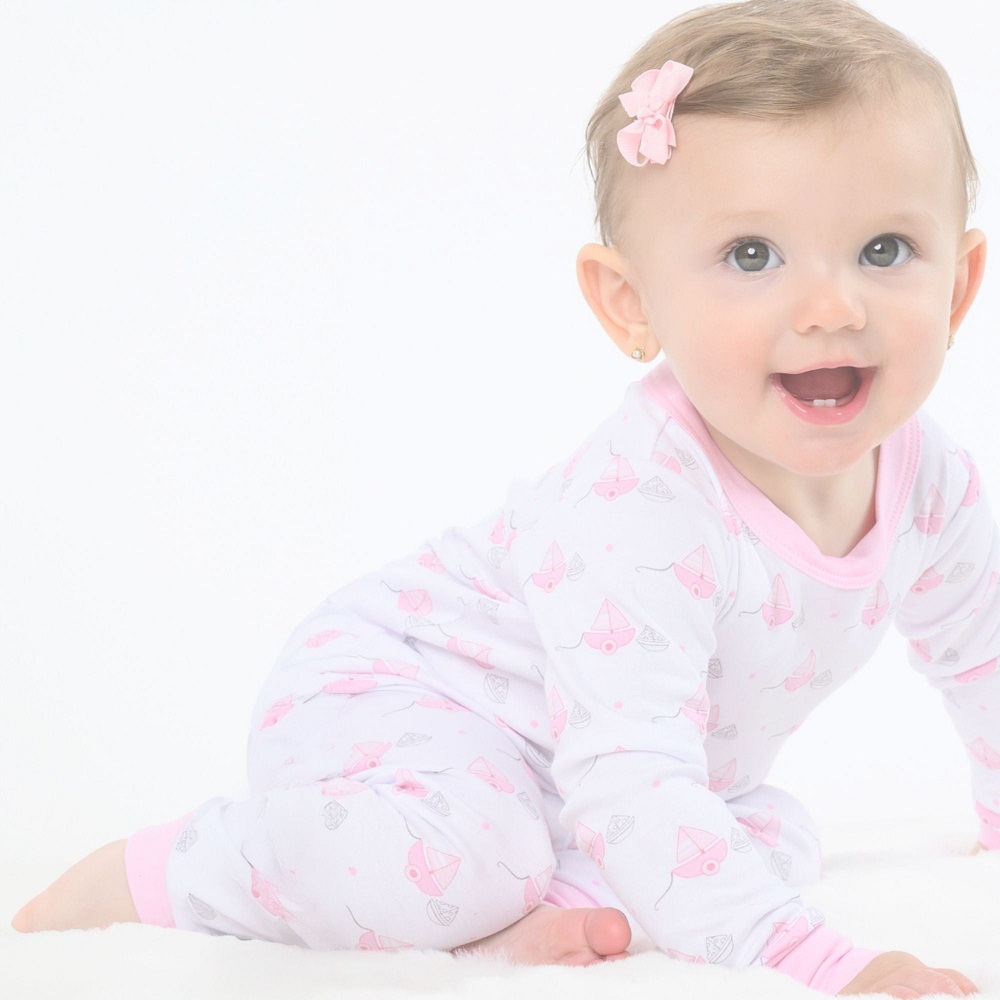Importance of Choosing the Right Baby Sleepwear
Choosing the right baby sleepwear guide for your baby is crucial. It directly affects your baby’s comfort and safety during sleep. Proper sleepwear can help your baby rest peacefully and stay protected from potential risks.
How Sleepwear Impacts Baby’s Safety and Comfort
Baby sleepwear guide plays a big role in ensuring safe sleep. Comfortable fabrics allow your baby to move freely and avoid irritation. Well-fitted clothes reduce the risk of suffocation or entanglement, especially during active sleep.
The right sleepwear also controls temperature effectively. Breathable fabrics help prevent overheating, ensuring your baby stays cool during summer nights. In colder months, soft and insulating materials keep your baby warm without compromising mobility. Sleepwear designed for babies prioritizes their delicate skin and unique needs.
Common Risks of Inappropriate Sleepwear
Inappropriate sleepwear can pose various risks. Loose, oversized garments increase the chance of suffocation or accidents. Rough or synthetic fabrics might irritate sensitive baby skin and cause rashes. Non-breathable materials can lead to overheating, making your baby uncomfortable and disrupting their sleep.
Sleepwear that doesn’t meet safety standards could also lack flame resistance, putting your baby at risk in case of a fire emergency. Uncertified products may use harmful dyes or chemicals, causing health concerns. Choosing safe options avoids these issues and promotes restful and secure sleep.
By prioritizing safety and comfort in sleepwear, parents can ensure their baby’s overall well-being during rest.

Key Features to Look for in Baby Sleepwear
Choosing the right baby sleepwear involves considering various important features. Ensuring your baby’s comfort and safety starts with exploring key factors like fabric, fit, and seasonal suitability.
Fabric Choices: Cotton, Bamboo, and More
The fabric of baby sleepwear significantly impacts comfort and safety. Cotton is widely preferred due to its softness and breathability. It keeps your baby comfortable and prevents skin irritation.
Bamboo fabric is another popular choice. It feels silky against the skin and is naturally hypoallergenic. Bamboo’s moisture-wicking properties also help regulate body temperature.
Ensure fabrics are free from harmful chemicals. Organic options are safer, especially for babies with sensitive skin. Avoid synthetic materials, as they can trap heat and feel rough.
Flame-Resistant vs. Snug Fit Sleepwear
Flame resistance is essential for baby sleepwear guide, especially in pajamas worn during sleep. Flame-resistant clothing reduces burn risks in emergencies. Look for labels indicating flame-retardant treatments.
Alternatively, snug fit sleepwear is another safe choice. Close-fitting clothes do not easily catch fire. They also eliminate the risk of fabric bunching, reducing suffocation hazards.
While shopping, check whether the sleepwear complies with safety standards. Ensure it follows guidelines set by regulatory authorities.
Season-Appropriate Options: Warm vs. Cool Weather Attire
Select sleepwear suitable for the current season. In warm weather, prioritize breathable, lightweight fabrics like cotton or bamboo. Sleeveless or short-sleeve options work best during hot nights.
For colder months, choose insulated materials to keep your baby warm. Look for sleepwear with footed pajamas or layering options such as onesies and wearable blankets.
Maintaining the right balance is essential. Avoid overdressing, as overheating poses serious safety risks. Always pick season-specific sleepwear to ensure your baby stays cozy and secure.
By understanding these features, you can make informed decisions about baby sleepwear guide, ensuring both safety and comfort.
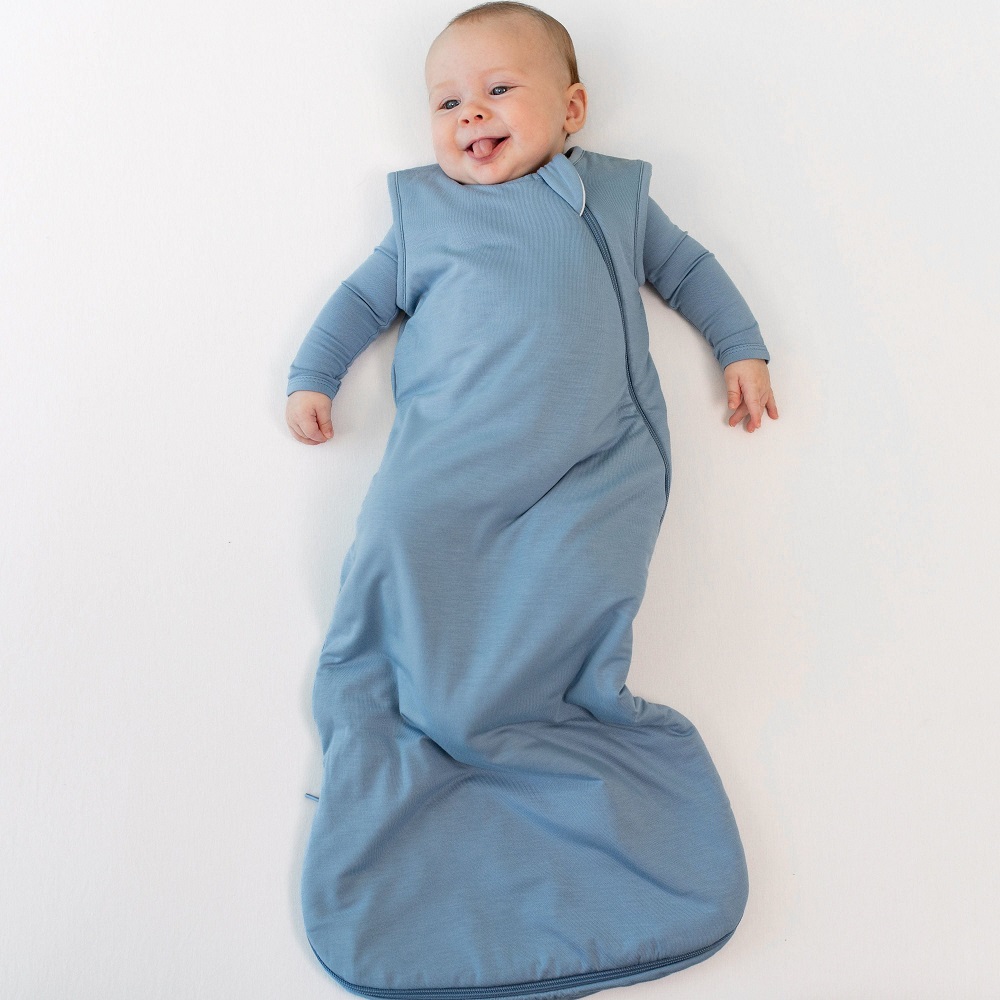
Safety Standards and Certifications for Baby Sleepwear
Ensuring your baby’s sleepwear adheres to safety standards is crucial. Sleepwear that meets regulations enhances safety and minimizes risks. Understanding these guidelines helps parents make informed decisions.
Understanding Sleepwear Safety Regulations
Baby sleepwear guide safety regulations aim to reduce risks of fire, suffocation, and skin irritation. In many countries, sleepwear intended for babies is required to be either flame-resistant or snug-fitting. Flame-resistant clothes are treated with chemicals that slow down igniting, providing better protection during fire emergencies. Snug-fitting garments reduce flammability and suffocation risks due to their close-fitting design.
Parents should check labels for compliance with safety regulations. For example, in the U.S., baby sleepwear guide follows standards set by the Consumer Product Safety Commission (CPSC). Always confirm that sleepwear has clear information about meeting these standards.
Recognizing Certified and Approved Products
Look for certifications when choosing sleepwear for your baby. Certified products often carry labels indicating compliance with health and safety standards. For example, garments marked with OEKO-TEX certification ensure fabrics contain no harmful substances.
Sleepwear approved by trusted organizations guarantees quality and safety. Flame-resistant sleepwear often has tags proving it meets required treatments. Snug-fit sleepwear includes labels showing it complies with size and fit guidelines.
Be cautious about unverified or uncertified products. They might use unsafe materials or dye processes. Prioritize sleepwear verified to maintain your baby’s health and safety efficiently. By choosing certified options, you ensure peace of mind while your baby sleeps.
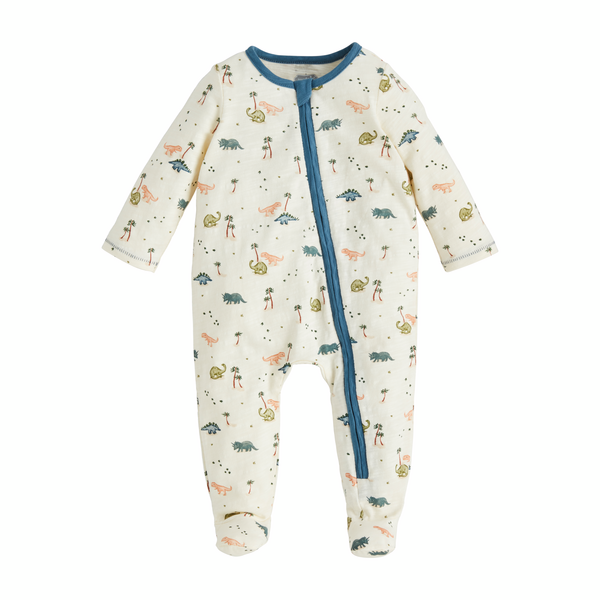
Tips for Ensuring Your Baby Sleeps Safely
Keeping your baby safe during sleep is a top priority for every parent. Proper choices and practices help minimize risks and create a comfortable sleeping environment.
Avoiding Loose Blankets and Overheating
Loose blankets can be dangerous for babies. They can cause suffocation or increase the risk of Sudden Infant Death Syndrome (SIDS). Instead, use wearable blankets or sleep sacks. These alternatives provide warmth without exposing your baby to unnecessary risks.
Overheating is another sleep safety concern. Babies cannot regulate their body temperature like adults. Dress your baby appropriately based on room temperature. Lightweight, breathable sleepwear is ideal for warm weather. For colder nights, opt for layering instead of heavy clothing.
Check your baby’s temperature regularly. Warm skin on the chest or back signals they are comfortable. Sweating, flushed cheeks, or damp hair may indicate overheating. Adjust the sleepwear or bedding accordingly to ensure comfort.
Dressing Your Baby in Layers for Adaptability
Layering is a flexible and effective way to dress your baby. It allows you to add or remove clothing based on the temperature. Start with a lightweight onesie as a base layer. Add footed pajamas or a sleep sack for extra warmth if needed.
Choose layers made from breathable materials, like cotton or bamboo. Avoid bulky or tight layers that can restrict movement. Make sure the layers fit snugly without being overly tight to eliminate suffocation risks.
Keep your baby’s room temperature between 68–72°F (20–22°C). This range is ideal for safe sleep. Use layers to adapt your baby’s sleepwear if the room temperature changes.
By avoiding loose blankets and managing sleepwear layers wisely, parents can ensure their baby sleeps safely and comfortably.
Common Mistakes to Avoid When Choosing Baby Sleepwear
Selecting the wrong sleepwear can lead to discomfort and safety concerns for your baby. Here are common mistakes parents should avoid to ensure their little one sleeps safely and comfortably.
Using Non-Breathable Fabrics
Non-breathable fabrics can cause overheating and skin irritation for your baby. Materials like synthetic polyester trap heat and moisture, making your baby sweat excessively. This discomfort disrupts sleep and may lead to rashes or irritation.
Stick to breathable options like cotton or bamboo fabrics. They wick moisture and allow airflow, keeping your baby cool and comfortable. Organic fabrics are even better, as they are free from harmful chemicals. Avoid heavily treated or chemical-laden materials that might irritate sensitive skin or cause health issues.
Ignoring Warning Labels or Washing Instructions
Warning labels provide essential information about your baby’s sleepwear safety. Ignoring them can expose your child to risks. For example, flame-resistant sleepwear requires specific care to maintain its protective features. Failing to follow instructions could diminish the effectiveness of flame resistance.
Washing instructions prevent damage to fabric and ensure longevity. Improper washing may wear out material, reducing its comfort and safety properties. Always follow care guidance provided by manufacturers, such as cold washes or avoiding harsh detergents.
Inspect the tags before purchasing sleepwear. They should indicate compliance with safety standards like flame resistance or snug-fit guidelines. Prioritize sleepwear with clear and reliable safety information.
By avoiding these mistakes, you create a secure and soothing sleep environment for your baby.
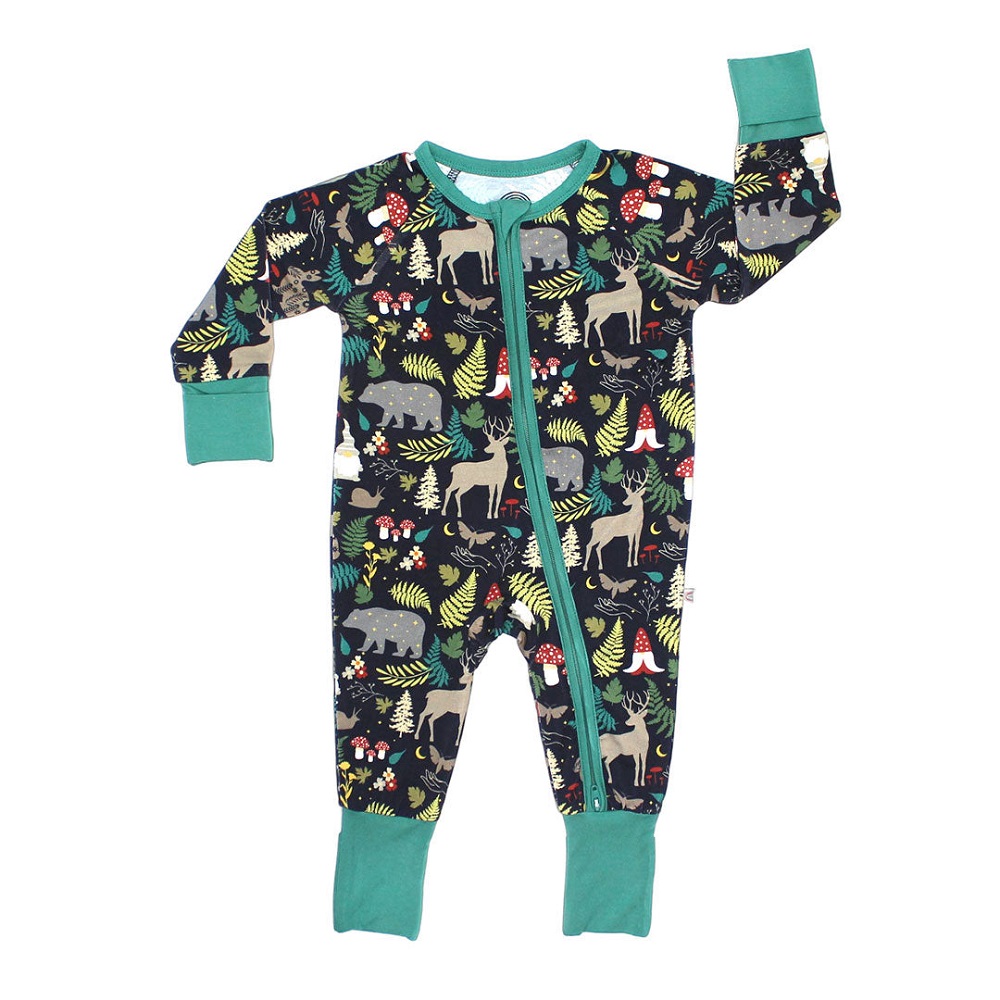
Recommendations for Newborns and Toddlers
Choosing the right sleepwear for newborns and toddlers requires special consideration. Their needs differ significantly due to age and activity level. Focus on comfort, safety, and suitability for their stage of development.
Sleepwear Options for Newborns
Newborns have delicate skin and limited movement. Their sleepwear should promote comfort and minimize risks.
- Soft and Breathable Fabrics: Opt for natural fabrics like cotton or bamboo. These materials are gentle and prevent irritation.
- Snug-Fitting Sleepwear: Snug-fitting options reduce flammability and keep newborns secure without loose fabric bunching.
- Sleep Sacks or Wearable Blankets: These alternatives to blankets ensure warmth and reduce the risks of suffocation.
- Easy Access for Diaper Changes: Look for options with zippers or snaps to simplify nighttime diaper changes.
Choosing certified and organic sleepwear further ensures safety. Avoid decorations like buttons or ribbons that might pose choking hazards.
Best Choices for Active Toddlers
Toddlers are more mobile and require flexible, durable sleepwear that accommodates their activity.
- Flexible Fabrics: Look for stretchy materials that allow free movement without restricting mobility.
- Two-Piece Pajama Sets: These align with a toddler’s growing independence and make dressing easier for them.
- Grip-Enhanced Footed Pajamas: If choosing footed sleepwear, ensure it has non-slip grips for safety during play.
- Seasonal Adjustments: Lightweight options work well for hot days, while insulated fabrics suit colder nights.
- Snug Fit or Flame-Resistant Options: Continue prioritizing safety standards by choosing snug fit designs or flame-retardant-treated clothing.
Active toddlers may also outgrow their sleepwear quickly, so check sizing often. Properly fitting clothes enhance comfort and safety.
By adapting sleepwear to newborns’ and toddlers’ unique needs, parents can ensure quality, safe sleep for their little ones.
Caring for and Maintaining Baby Sleepwear
Proper care of your baby’s sleepwear is essential for safety and longevity. Following the right guidelines ensures the fabric remains safe and comfortable for your little one.
Washing Instructions to Maintain Safety Features
Washing baby sleepwear correctly helps preserve its safety features, like flame resistance and fabric quality:
- Check the Label: Always read and follow the washing instructions on your baby’s sleepwear label.
- Avoid Harsh Detergents: Use mild and baby-safe detergents to prevent skin irritation and fabric damage.
- Wash Separately: Wash baby sleepwear separately from other laundry to avoid cross-contamination with chemicals.
- Cold or Warm Water: Use cold or warm water as indicated, especially for flame-resistant sleepwear.
- Air Dry or Low Heat: Air dry or use low heat settings to maintain the integrity of the material.
- Skip Fabric Softeners: Do not use fabric softeners, as they reduce flame-resistant properties.
Regularly washing baby sleepwear guide with care ensures it remains safe and cozy for your baby.
When to Replace Your Baby’s Sleepwear
Knowing when to replace your baby’s sleepwear is important for safety and comfort:
- Size Mismatches: Replace clothes that no longer fit snugly to avoid suffocation or entanglement risks.
- Fabric Wear and Tear: Discard sleepwear with holes, thinning fabric, or missing buttons/zippers.
- Loss of Flame Resistance: If flame-resistant sleepwear no longer complies with washing guidelines, replace it immediately.
- Signs of Irritation: Switch to a new material if current sleepwear causes irritation or rashes.
- Outgrown Seasonal Needs: Update sleepwear as weather changes to ensure proper temperature control.
By replacing sleepwear at the right time, you maintain your baby’s safety and ensure restful sleep.
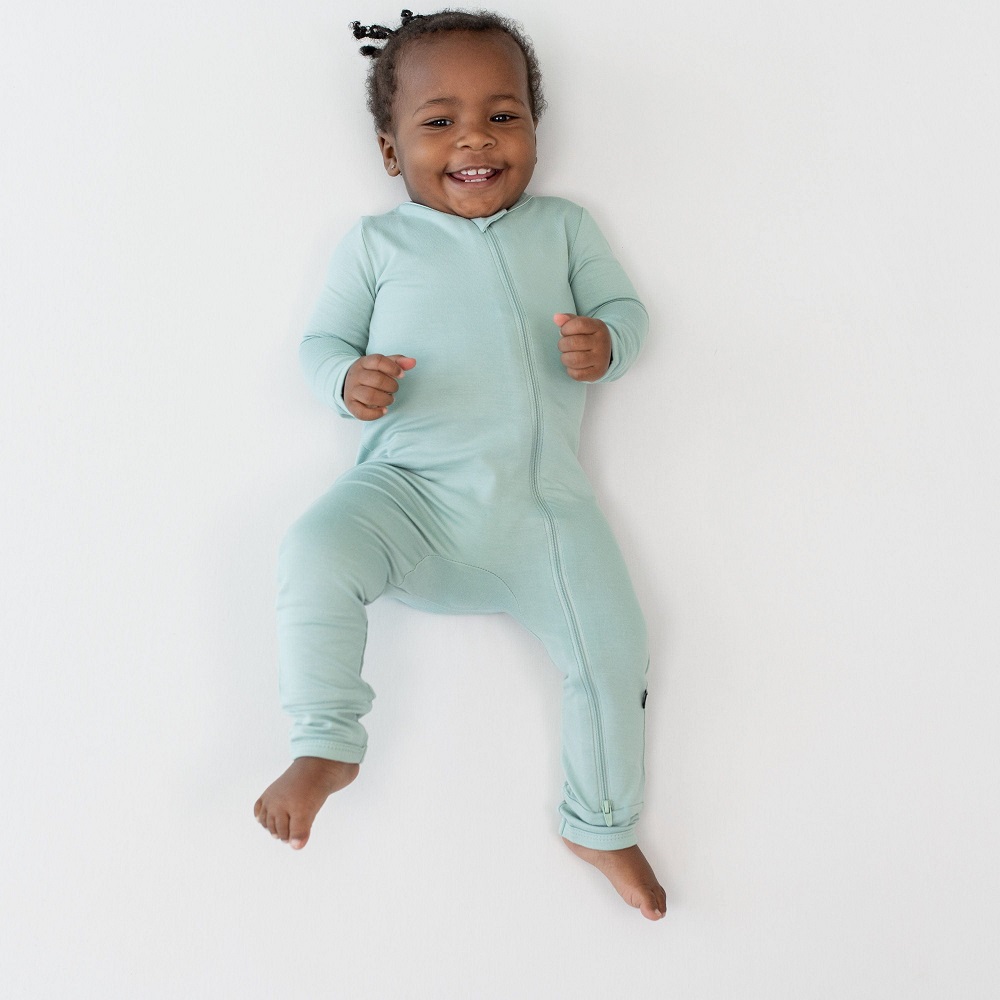
Establishing a Bedtime Routine
Importance of Consistency
Creating a soothing bedtime routine is vital for promoting good sleep habits in babies. A consistent routine signals to your baby that it is time to wind down and prepare for sleep. Incorporating calming activities such as a warm bath, gentle massages, or soft storytelling can help your baby feel relaxed and secure before bedtime.
When choosing sleepwear as part of this routine, consider selecting pieces that are easy to put on and take off. This simple choice can help make the transition to sleep smoother. The routine should ideally take place in the same location, such as the nursery, to reinforce the association between that space and sleep. Over time, your baby will come to recognize these cues, leading to more peaceful nights for both of you.
Adapting to Changes
As your baby grows, their sleep needs and preferences may change. Stay flexible and open to adjusting the bedtime routine as necessary. Consider things like new milestones, teething, or changes in nap schedules that may affect how your baby responds to bedtime.
You might find that your baby prefers different types of sleepwear as they grow. For instance, once your child begins to move more actively, they may need sleepwear that allows for greater mobility. Staying attuned to your baby’s developmental changes and focusing on individualized comfort will help maintain a positive sleep environment throughout their early years.
Addressing Sleep Issues
It’s not uncommon for babies to face sleep challenges, and recognizing the right sleepwear can help ease those transitions. If your baby frequently wakes during the night or struggles to fall asleep, assess whether their sleepwear may be contributing to their discomfort.
In cases where babies seem too warm or cold, consider adjusting the sleepwear to suit the season and room temperature better. Sometimes, these small adjustments can make a significant difference in their ability to settle down for sleep.
Seeking Professional Guidance
If sleep issues persist, it may be helpful to consult a pediatrician or a sleep specialist. They can provide tailored advice and insights into your baby’s sleep patterns. Understanding your baby’s unique sleep needs and challenges can allow for a more effective approach to creating a peaceful sleep environment.
By prioritizing comfort and safety in baby sleepwear guide, alongside a consistent bedtime routine, you can set your baby on a positive path toward healthy sleep habits. A thoughtful approach to these factors will ultimately contribute to your baby’s overall well-being and development, leading to restful nights for the entire family.
